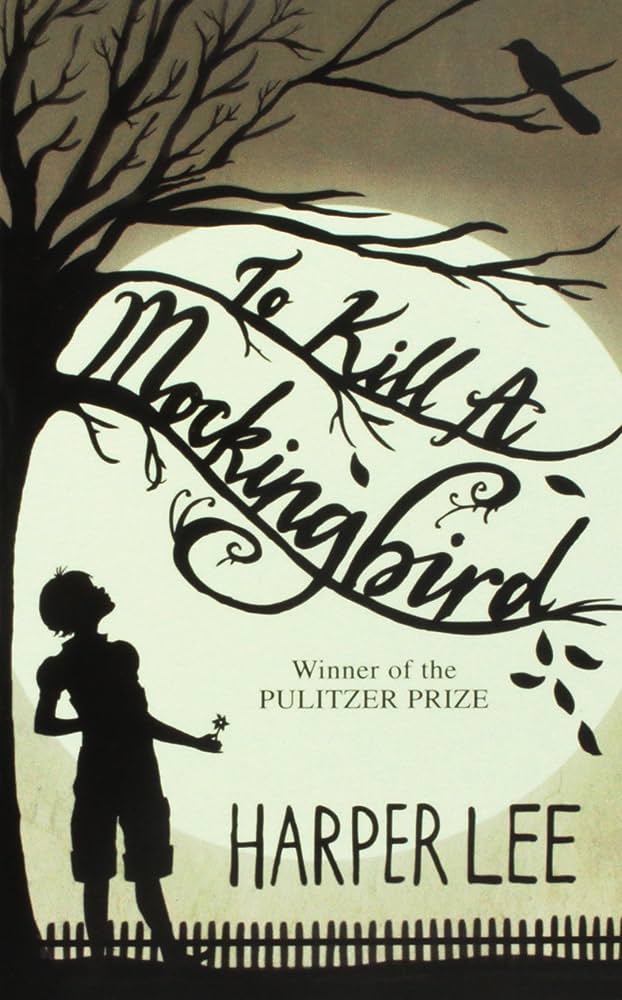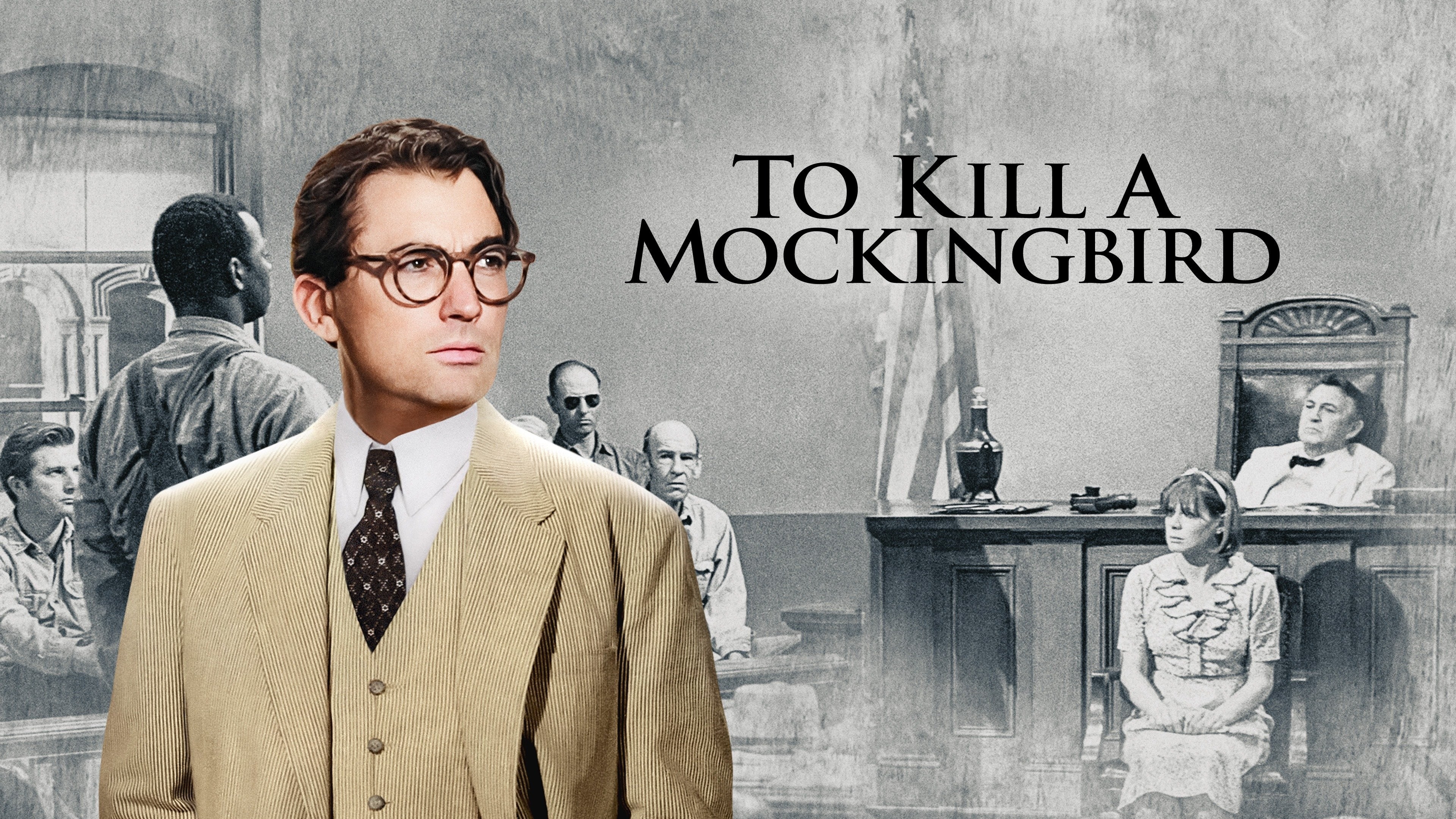 Harper Lee’s To Kill a Mockingbird is a poignant exploration of racial injustice, moral growth, and compassion set in the fictional town of Maycomb, Alabama during the 1930s. The novel unfolds through the eyes of Scout Finch, a young girl, and her brother Jem, as their father, Atticus Finch, defends Tom Robinson, a Black man falsely accused of raping a white woman, Mayella Ewell.
Harper Lee’s To Kill a Mockingbird is a poignant exploration of racial injustice, moral growth, and compassion set in the fictional town of Maycomb, Alabama during the 1930s. The novel unfolds through the eyes of Scout Finch, a young girl, and her brother Jem, as their father, Atticus Finch, defends Tom Robinson, a Black man falsely accused of raping a white woman, Mayella Ewell.
The narrative captures the children’s coming-of-age journey, guided by their compassionate father and influenced by the enigmatic Boo Radley, a recluse living near the Finch family. Atticus, a principled lawyer, strives to impart valuable lessons about empathy, fairness, and understanding in a racially divided Southern society.
As the trial unfolds, Atticus faces hostility from a prejudiced community unwilling to accept the possibility of a fair trial for a Black man. The novel grapples with the harsh realities of racism, social injustice, and the moral complexities of navigating a deeply divided society.
The climax involves a confrontation with Bob Ewell, the accuser’s father, leading to unexpected events that shed light on the deeper, ingrained prejudices within Maycomb. The story is punctuated with moments of childhood innocence, moral awakening, and the haunting presence of Boo Radley.
Characters
Scout Finch: The narrative is filtered through Scout’s perspective, providing an innocent and honest portrayal of the events. Her growth from a naive child to someone with a deeper understanding of societal complexities serves as a poignant narrative arc.
Jem Finch: Scout’s older brother, Jem, undergoes a transformative journey as he grapples with the harsh realities of racism and injustice. His coming-of-age experience reflects the broader themes of the novel.
Atticus Finch: A moral compass and father figure, Atticus embodies the principles of justice, integrity, and empathy. His defense of Tom Robinson becomes a symbol of the novel’s exploration of moral fortitude in the face of societal prejudice.
Boo Radley: A mysterious and reclusive neighbor, Boo Radley becomes a symbol of the town’s prejudices and the consequences of judgment based on appearances. His unexpected act of kindness towards the children reveals the novel’s underlying message about compassion and humanity.
Calpurnia: The Finch family’s Black housekeeper, Calpurnia, serves as a bridge between the white Finch family and the Black community. Her role adds depth to the exploration of racial dynamics in Maycomb.
Bob Ewell: The antagonist of the story, Bob Ewell, represents the embodiment of racial hatred and societal prejudice. His actions drive the narrative towards its climax, highlighting the stark divisions within Maycomb.
The characters in “To Kill a Mockingbird” are multi-dimensional, each contributing to the novel’s exploration of morality, compassion, and the complexities of human nature.
To Kill a Mockingbird Ending Explained
Note: Spoiler Alert
The novel concludes with Scout’s perspective on Boo Radley, whom she meets for the first time. Boo’s reclusive nature has fueled rumors and fear in the community, but as Scout stands on Boo’s porch, she gains a profound understanding of his perspective. The meeting symbolizes a coming-of-age moment for Scout, as she grasps the impact of empathy and understanding.
The ending also involves Sheriff Tate’s decision to protect Boo from public scrutiny by declaring Bob Ewell’s death an accident. Tate recognizes that exposing Boo to the town’s judgment would be a greater injustice than holding him accountable for Bob’s death. This decision encapsulates the novel’s central theme of moral integrity and the importance of protecting the vulnerable.
The final pages reflect on the novel’s title, “To Kill a Mockingbird,” which metaphorically refers to the senseless destruction of innocence. Boo Radley, portrayed as a misunderstood and innocent figure, becomes a symbolic mockingbird spared from harm. The novel suggests that preserving the purity of compassion and empathy is crucial in a world tainted by prejudice and hatred.
Frequently Asked Questions
Is It based on a true story? No, “To Kill a Mockingbird” is not based on a true story. While the novel is influenced by Harper Lee’s experiences growing up in the racially charged South during the 1930s, the characters and events are fictional. Lee drew inspiration from her observations of racial injustice, moral dilemmas, and societal divisions to craft a narrative that resonates with universal themes.
What is the main idea of the book? The main idea of “To Kill a Mockingbird” revolves around the exploration of racial injustice, moral growth, and empathy. The novel delves into the complexities of a racially divided society and the moral dilemmas faced by individuals striving to uphold justice in the face of prejudice. Additionally, the book emphasizes the importance of understanding and compassion in preserving innocence and humanity.
Is this book worth reading? Absolutely. “To Kill a Mockingbird” is a literary classic that tackles timeless themes with grace and poignancy. Harper Lee’s narrative craftsmanship, coupled with the exploration of societal issues, makes it a compelling and thought-provoking read. The novel’s impact on literature and its ability to provoke meaningful discussions on justice and morality render it a must-read for individuals of all ages.
What is the symbolism in this book? Symbolism is woven throughout “To Kill a Mockingbird.” The mockingbird, symbolizing innocence and vulnerability, serves as a central metaphor. Characters like Boo Radley and Tom Robinson are metaphorical mockingbirds, innocent individuals harmed by societal prejudices. Other symbols include the treehouse, representing a sanctuary of childhood innocence, and the knothole gifts, symbolizing unexpected acts of kindness.
Can you recommend me any other interesting books of this author? While Harper Lee only published “To Kill a Mockingbird” during her lifetime, her companion novel, “Go Set a Watchman,” was released posthumously. “Go Set a Watchman” explores an adult Scout’s return to Maycomb and grapples with the societal changes that occurred since her childhood. It provides additional insights into the characters and themes introduced in “To Kill a Mockingbird.”
Can you recommend me other interesting books in the similar genre? If you appreciate literature exploring racial injustice and moral complexities, Toni Morrison’s “Beloved” is a profound exploration of the impact of slavery on individuals and communities. John Steinbeck’s “The Grapes of Wrath” examines social issues and the struggle for justice during the Great Depression. Both novels share thematic resonances with “To Kill a Mockingbird” and offer powerful insights into the human experience.

